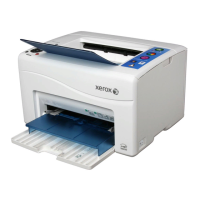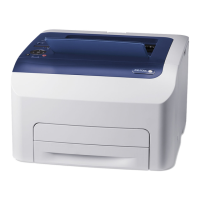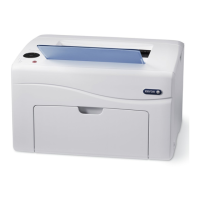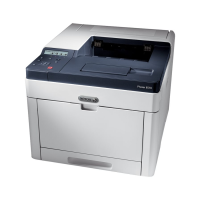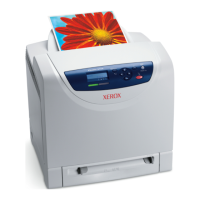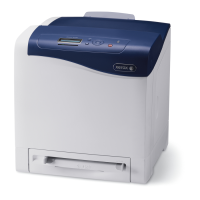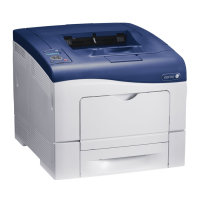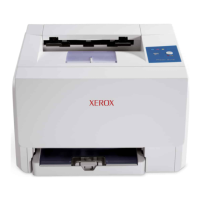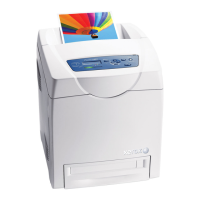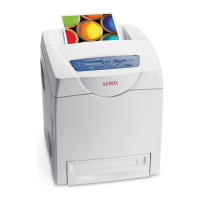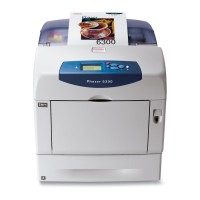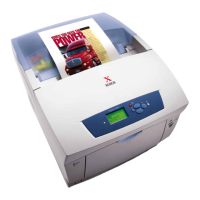2-60 Xerox Internal Use Only Phaser 6000/6010 and WC 6015 MFP
Theory of Operation
Scanner
The scanner splits the image into a fine grid, then reads the brightness
(white/black) of each cell. This operation is called scanning. The white/black
information is converted to a digital signal: bright cells become 1, dark cells 0.
During scanning, the finer the grid into which the original is divided, the greater
the scanning precision of the original image. For a G3 FAX (normal mode: G3
Normal), scanning is performed at the resolution of 8 divisions per millimeter
(200 dpi) in the horizontal direction and 3.85 divisions per millimeter in the vertical
direction. This means that the 200 dpi in-line carriage assembly is shifted
approximately four times per millimeter in the vertical direction. For an A4 original,
the data amounts to approximately two million pixels. In the high-quality mode
(G3 Fine), scanning resolution is 8 divisions per millimeter in the horizontal
direction and 7.7 divisions per millimeter in the vertical direction, where the data
amounts to approximately four million pixels. As resolution increases, the amount
of data also increases, lengthening the transmission time.
Control Circuit
The digital signal from a scanned image is subjected to DA conversion
(modulation) by the control circuit to enable transmission over an analog
telephone line. After conversion, the data is sent as an analog signal. The sound
audible during transmission is image data that has become an analog signal, that
is, an audio signal.
The analog signal arriving over the telephone line is then subjected to AD
conversion (demodulation) by the control circuit of the receiving FAX machine, and
restored to a digital signal.
DA conversion, analog signal transmission, analog signal reception, and AD
conversion are all performed by a modem (modulator/demodulator) in the control
circuit. A modem consists of a Network Control Unit (NCU) for connecting to the
telephone line and an A/D conversion unit for performing DA and AD conversions.
Printer
The black/white information obtained from the AD conversion is sent to the
printer, where black cells are reproduced on the paper at the positions where they
were on the original.
